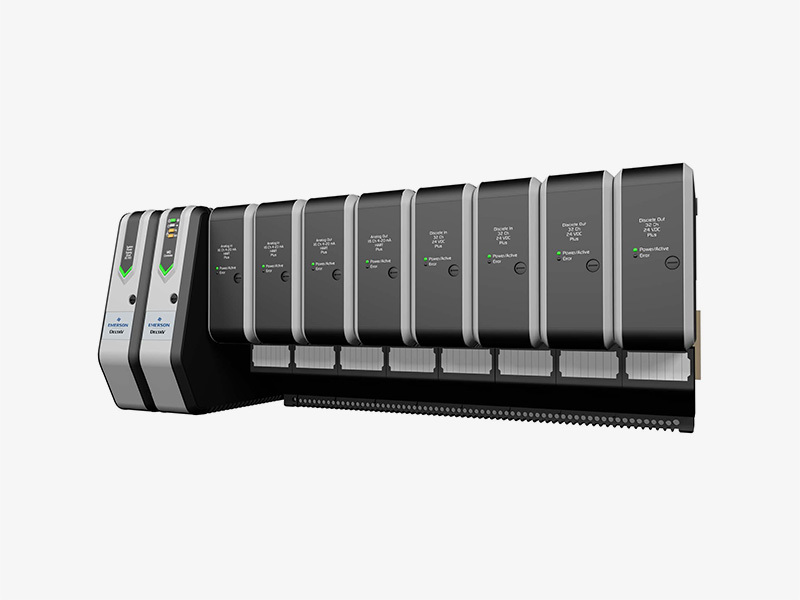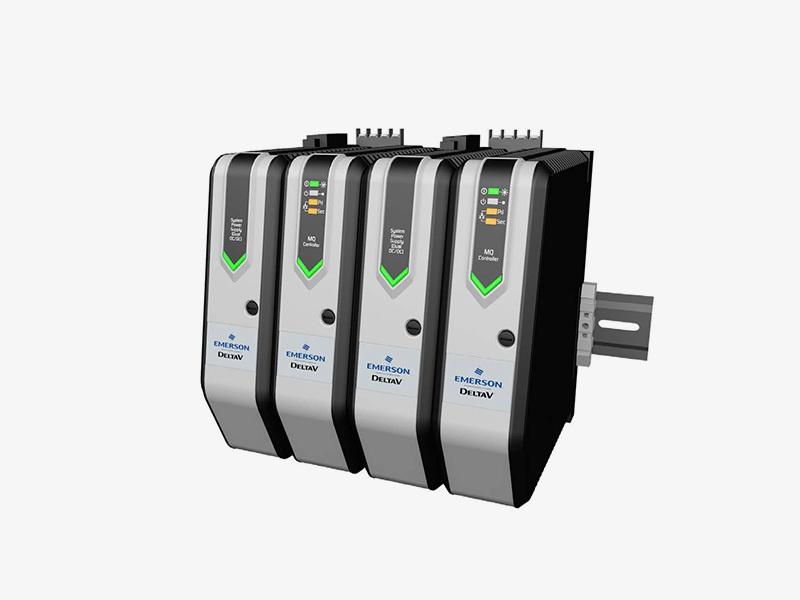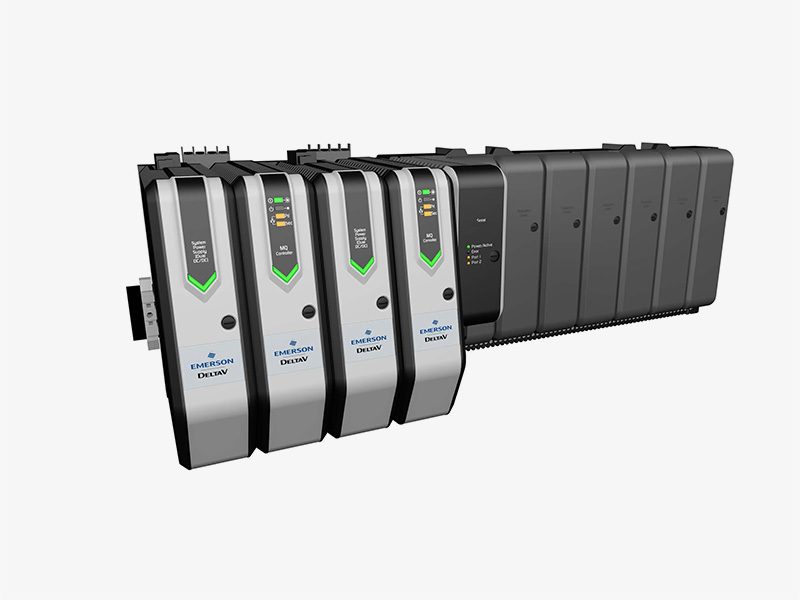DeltaV SIS™ Logic Solver
The DeltaV SIS™ process safety system, part of Emerson’s smart SIS, ushers in the next generation of Safety Instrumented Systems (SIS). This smart SIS approach uses the power of predictive field intelligence to increase the availability of the entire safety instrumented function.
分类:
Emerson
关键词:

咨询热线:
产品描述
The DeltaV SIS™ process safety system, part of Emerson’s smart SIS, ushers in the next generation of Safety Instrumented Systems (SIS). This smart SIS approach uses the power of predictive field intelligence to increase the availability of the entire safety instrumented function.
Benefits
The World’s first smart SIS. Research shows that over 85% of all faults in SIS applications occur in field instruments and final control elements. The DeltaV SIS process safety system has the first smart logic solver. It communicates with intelligent field devices using the HART protocol to diagnose faults before they cause spurious trips. This approach increases process availability and reduces lifecycle costs.
The DeltaV SIS™ platform is the world’s first smart process safety system to use the power of predictive intelligence for increasing the availability of the entire safety instrumented function.
Flexible deployment. Traditionally, process safety systems have been deployed either separate from the control system or interfaced to control systems via engineered interfaces based on open protocols (e.g. Modbus). However, most end users require a higher integration for configuration, maintenance, and operations environment. DeltaV SIS can be deployed either as interfaced to any DCS or integrated with DeltaV DCS. Integration is accomplished without scarifying functional separation as safety functions are implemented in separate hardware, software, and networks while being seamlessly integrated at the workstations.
Easy Compliance with IEC 61511. IEC 61511 demands rigorous user management and the DeltaV SIS process safety system provides it. IEC 61511 requires that any changes made from an HMI (e.g. to a trip limit) be extensively vetted to ensure that the right data is written to the right Logic Solver. The DeltaV SIS process safety system automatically provides this data verification.

The DeltaV SIS process safety system scales to fit your safety application.
Scales to fit any size application. Whether you have an isolated wellhead or a large ESD/fire and gas application, the DeltaV SIS process safety system scales to provide you
Scan rate and memory usage are constant and independent of system size.with the safety coverage you need for your SIL 1, 2 and 3 safety functions. Each SLS 1508 Logic Solver has dual CPUs and sixteen channels of I/O built into it. This means that no additional processors will ever be required to expand the system, since each Logic Solver contains its own CPUs.
SIL 3-rated. DeltaV SLS 1508 Logic Solvers are installed in redundant pairs for increased process availability of your SIS loops.
Redundant architecture includes:
• Dedicated redundancy link
• Separate power supply to each Logic Solver
• I/O published locally every scan on redundant peer-to-peer link
• Same input data for each Logic Solver
Cybersecurity readiness. In an increasingly connected world, cybersecurity rapidly became an integral part of every process safety project. Building a defendable architecture is the basis for achieving a defendable safety system. DeltaV SIS when deployed with DeltaV DCS was the first process safety system to be certified according to ISA System Security Assurance (SSA) Level 1, based on IEC 62443.
Product Description
This section provides general information on DeltaV SIS hardware. Refer to the Installing Your DeltaV Distributed Control System manual for more information on DeltaV system hardware.
The DeltaV SIS process safety system consists of the following hardware:
• Redundant Logic Solvers (SLS 1508) and termination blocks
SISNet Repeaters (see separate product data sheet)
• Carrier extender cables
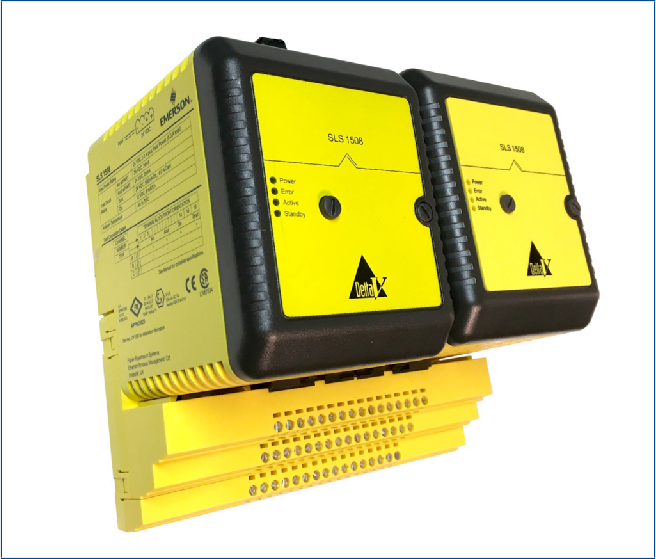
A redundant SLS 1508 Logic Solver.
Logic Solvers (SLS 1508) contain the logic-solving capability and provide an interface to 16 I/O channels that can be configured as Discrete Input, Discrete Output, Analog Input (HART) and HART two-state output channels. Logic Solvers and termination blocks install on the 8-wide carrier.Local peer bus extender cables
Right 1-wide carrier with termination
Logic Solvers communicate with each other through the carriers over a two-channel, local peer bus (SISnet) and remote peer ring. Local Logic Solvers are hosted by the same DeltaV controller and remote Logic Solvers are hosted by a different
DeltaV controller. Logic Solvers are powered by a 24 V DC power supply that is separate from the power supply that drives the DeltaV controller and I/O. Logic Solvers install in odd-numbered slots (1,3,5,7) on the 8-wide carrier. Redundant Logic Solvers use four slots.
SISNet Repeaters extend communication beyond the local
Logic Solvers connected to one DeltaV controller and broadcast global messages to remote SLS 1508 Logic Solvers through
a fiber-optic ring Carrier extender cables extend Local Bus power and signals between 8-wide carriers. Local peer bus extender cables extend the local peer bus (SISNet) between SLS 1508 Logic Solvers on different carriers. 1-wide carriers with terminators terminate the local peer bus at the final carrier. For additional information please consult
DeltaV SISNet Repeater product datasheet.
Control Network: The DeltaV Control Network provides communication between the nodes in the DeltaV network. Refer to the Installing Your DeltaV Digital Automation System manual for complete information on the Control Network.
Local Bus: The Local Bus provides communication between DeltaV controllers and SLS 1508 Logic Solvers and between DeltaV controllers and SISnet Repeaters.
Local Peer Bus (SISNet): SLS 1508 Logic Solvers communicate with other SLS 1508 Logic Solvers and with local SISNet Repeaters through the carriers over a 2 channel local peer bus. The same message is broadcasted over both channels. The local peer bus must be terminated at both ends. The local peer bus is terminated at the left end through the 2-wide power/controller carrier and at the right end through a terminated 1-wide carrier.
The SISNet Repeaters can be located anywhere on a local peer bus – between the DeltaV Controller(s) and the terminated
1-wide carrier.
Remote Peer Ring: SISNet Repeaters hosted by one DeltaV controller communicate with SISNet Repeaters hosted by a different DeltaV controller over a fiber-optic remote peer ring. A local SISNet Repeater collects locally generated messages that have been designated as global variables into a single message and sends it to the next SISNet Repeater in the ring. Upon receipt of a message, the receiving SISNet Repeater broadcasts it on its local peer bus (SISNet) and forwards the message to the next SISNet Repeater in the ring. A global message is forwarded around the ring once. The primary SISNet Repeaters form one fiber-optic ring and the secondary form a separate, independent ring.

DeltaV SIS process safety system architecture.
Carrier extender cables and local peer bus extender cables connecting a DeltaV controller and 8-wide carrier with standard DeltaV I/O and SLS 1508 Logic Solver to a second 8-wide
carrier (hosted by the same controller) are installed with SLS 1508 Logic Solvers, SISNet Repeaters, and a terminated 1-wide carrier. SLS 1508 Logic Solver messages are communicated to a remote SLS 1508 Logic Solver
(hosted by a separate controller) through fiber-optic cables.
Multiple Domains: The simplest implementation of an SLS 1508 network is to have one SIS Network ring and one SIS Network domain, that includes all of the logic solvers in the SIS Network ring. In larger applications, the logic solvers can be split into multiple SIS Network domains. Another approach is to have multiple SIS Network rings, each on a SIS Network domain.
Unique Redundancy Methodology
While the SLS 1508 Logic Solver is rated suitable for use in
SIL 3 applications in simplex mode, it is installed in redundant pairs for increased process availability.
Redundant SLS 1508 Logic Solvers run in parallel at all times. Both read the inputs from the I/O terminals, both execute the logic and both drive the outputs at the I/O terminals.
There is no concept of primary and backup or master and slave, which is unlike any other SIS. The only difference between
the two is that one communicates with both the engineering and operator workstations and the dedicated safety network (SISNet); this is the one with the Active light on the bezel.
The other (Standby) is communicating only on the SISNet.
In the event that a failure is detected in one of the SLS 1508 Logic Solvers, it automatically goes to a failed state. In this condition, all its output channels are de-energized; this has no impact on the other SLS 1508 Logic Solver or the physical outputs because the other SLS 1508 Logic Solver continues
to read inputs, execute logic and drive outputs. The transition from redundant to simplex mode is therefore
completely bumpless.
Redundancy
The redundant SLS 1508 Logic Solver modules are connected
to the field at the redundant terminal block. No control strategy configuration is required to take advantage of SLS 1508 Logic Solver redundancy, as the system’s auto-sense capability automatically recognizes the redundant pair of Logic Solvers.
An integrity error alarm in a redundant SLS 1508 Logic Solver pair will notify the operator of a failure. Both SLS 1508
Logic Solvers in a redundant pair are monitored for integrity alarms at all times.
Events that can cause integrity alarms include:
• Hardware failure within a SLS 1508 Logic Solver
• Communications failure between a SLS 1508 Logic Solver and the SISNet
• Communications failure between a redundant pair of SLS 1508 Logic Solvers
• Communications failure between a SLS 1508 Logic Solver and an DeltaV Controller
Removal of a SLS 1508 Logic Solver from the carrier
The health and status of both SLS 1508 Logic Solvers
and their channels are available in the diagnostics explorer.
When one of a redundant pair of SLS 1508 Logic Solvers is removed online there is no disturbance to the process.
When the missing SLS 1508 Logic Solver is replaced with another SLS 1508 Logic Solver, the new SLS 1508 Logic Solver completes its power-up self-tests before the active Logic Solver cross-loads the current database. In safe areas, failed SLS 1508 Logic Solvers can be replaced under power. In hazardous areas, appropriate installation procedures must be followed.
Automatic proof testing can be selected on a redundant pair of SLS 1508 Logic Solvers. The desired proof-test interval is set in the configuration and the SLS 1508 Logic Solvers perform
the proof test automatically. A warning is given to the operator before the automatic proof test is started.
With DeltaV SIS process safety system, events are automatically generated as function blocks are executed within a module scan. Events are time stamped with a resolution of <1 ms,
and they are recorded in the sequence that they occur in the Event Chronicle. When using standard function blocks such as input blocks, |voter blocks, and cause and effect blocks,
a standard set of events are automatically generated without special configuration or programing required. For example, I/O failures, trip limits, first outs, and other similar events are automatically time stamped by function blocks and recorded in the Event Chronicle. When a process variable exceeds the trip limit, DeltaV SIS records the event along with the analog value and the trip condition.
In general, when there is a plant event that triggers an emergency shutdown from the SIS, one input will exceed a trip limit on one scan and this will cause outputs to trip and more inputs will then change state. Sequence of Events Recording has been used to find that first input that caused the trip by looking at all of the inputs in the plant. With the DeltaV SIS system, the operator simply filters the Event Chronicle for first out trips, and the first-out is clearly visible.
If higher resolution is required for some channels then they can be wired to both the DeltaV SIS Logic Solver and also to a DeltaV Discrete Input Card for Sequence of Events, which provides a resolution of 0.25 ms.
System Compatibility
DeltaV SLS 1508 Specifications
|
Common Environmental Specifications for SLS 1508 Logic Solver |
|
|
Category |
Specifications |
|
Storage Temperature |
-40 to 85°C (-40° to 185°F) |
|
Operating Temperature* |
-40 to 70°C (-40° to 158°F) |
|
Relative Humidity |
5 to 95% , non-condensing |
|
Airborne Contaminants |
ISA-S71.04-1985 Airborne Contaminants Class G3 Conformal coating |
|
Protection Rating |
IP 20 |
|
Hazardous Area/Location |
European EMC Directive per EN61326-1, Criterion A NAMUR NE21 EMC Requirements Low Voltage Directive IEC 61010-1 Factory Mutual, Non-Arcing Class 1, Div 2, Groups A, B, C, D, T4 hazardous locations ATEX 3 G EEx IIC-nA T4 EN50021:1999 CSA 1010 |
|
Shock |
10 g ½-sine wave for 11 ms |
|
Vibration |
1 mm peak-to-peak from 5 to 16 Hz; 0.5 g from 16 to 150 Hz |
*Operating any electronics at the higher end of its temperature range for long periods of time will shorten its expected lifetime,
see Effects of Heat and Airflow Inside an Enclosure White Paper for more information.
|
SLS 1508 Logic Solver Physical Specifications |
|
|
Item |
Specifications |
|
Input Power |
24 V DC ± 20%, 1.0 A plus field power (5.0 A total) |
|
Note: It is recommended that the SLS and DeltaV controller and I/O use separate power supplies |
|
|
Field Power |
4 A maximum (actual value depends upon channel type and field device type) |
|
Isolation |
Each channel is optically isolated from the system and factory-tested to 1500 V DC. No channel-to-channel isolation. |
|
Local Bus Current |
None |
|
Mounting |
In SIS (yellow) terminal blocks in odd-numbered slots (1, 3, 5, 7) on the 8-wide carrier. Redundant SLSs take 4 slots. |

Logic Solver dimensions.
|
SLS 1508 Logic Solver Weight, Heat Generation and Power Consumption |
|
|
Item |
Specifications |
|
Redundant Logic Solver |
Weight – 1.20 kg Heat Dissipation – 24 W Power – 2 A @ 24 V DC + Dig out Field Loads |
The Logic Solver provides 16 channels of flexible I/O, meaning that each channel can be configured as an Analog Input (HART), HART Two-State Output, Discrete Input, or Discrete Output channel.
|
Analog Input Channel Specifications (Includes Hart) |
|
|
Item |
Specifications |
|
Number of Channels |
16 |
|
Isolation |
Each channel is optically isolated from the system and factory-tested to 1500 V DC. No channel-to-channel isolation. |
|
Nominal Signal Span |
4 to 20 mA |
|
Full Signal Range |
1 to 24 mA |
|
2-Wire Transmitter Power |
15.0 V minimum terminal-to-terminal @ 20 mA; current limited to 24 mA max |
|
Input measurement accuracy |
0.2% of span |
|
Safety / Diagnostic Accuracy |
2.0% of span |
|
Resolution |
16 bits |
|
Filtering |
2-pole, corner frequency 5.68 Hz -3 dB at 5.68 Hz -20.0 dB at 40 Hz (half the sample rate) |
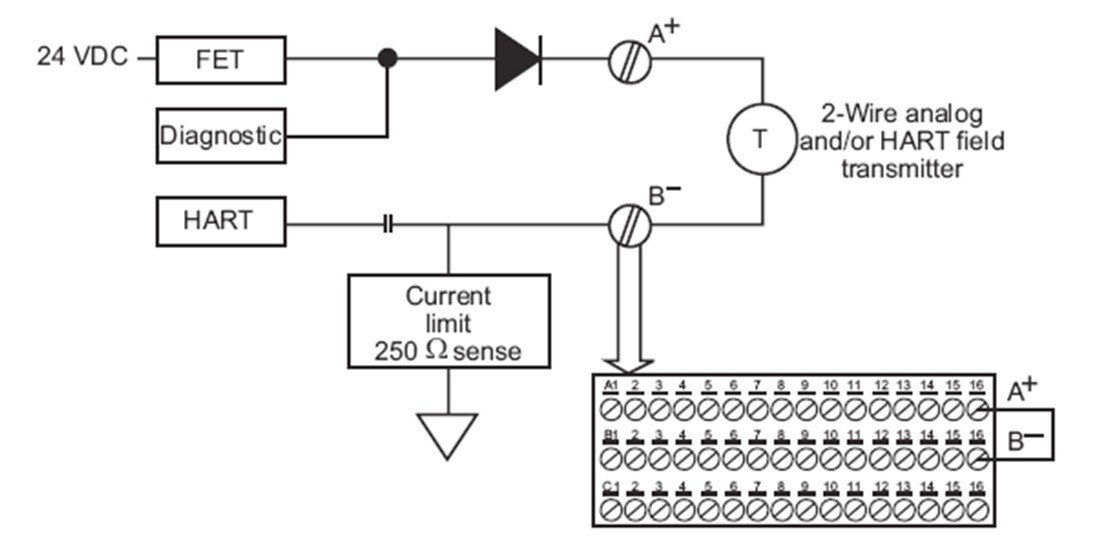
Wiring diagram and terminations for HART analog input channels.
|
Hart Two-State Output Channel Specifications |
|
|
Item |
Specifications |
|
Number of Channels |
16 |
|
Isolation |
Each channel is optically isolated from the system and factory-tested to 1500 V DC. No channel-to-channel isolation. |
|
Nominal Signal Span |
On state 20 mA Off state 0 or 4 mA (configurable) |
|
Full Signal Range |
0 to 24 mA |
|
Safety / Diagnostic Accuracy |
5.0% of span |
|
Resolution |
12 bits |
|
Compliance Voltage |
20 mA into 600 Ω load |
|
Open-Loop Detection |
< 1.0 mA – when the output drifts 15% out of the configured value |
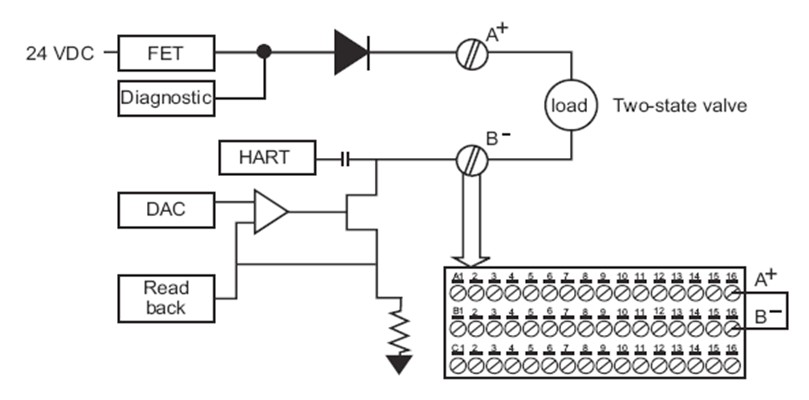
Wiring diagram and terminations for 2-Wire HART two-state output channels.
Line Fault Detection — The Discrete Input channels have line fault detection for detecting open or short circuits in field wiring. To use this capability you must:
|
Discrete Input Channel Specifications |
|
|
Item |
Specifications |
|
Number of Channels |
16 |
|
Isolation |
Each channel is optically isolated from the system and factory-tested to 1500 V DC. No channel-to-channel isolation. |
|
Detection Level For On |
≥2 mA |
|
Detection Level For Off |
≤1.65 mA |
|
Input Impedance |
~1790 Ω |
|
Input Compatibility |
Inputs compatible with: • NAMUR sensors (12 V) • Dry contact • Dry contact with end-of-line resistance |
|
Line Fault Detection – Short Circuit (Optional) |
100 Ω > 6 mA |
|
Line Fault Detection – Open Circuit (Optional) |
> 40 kΩ < 0.35 mA |
Enable line fault detection in your configuration. Enable line fault detection on a channel-by-channel basis when you configure the channels.
Connect the dry contact to external resistors. Connect the dry contact to a 12 KΩ resistor in parallel (allows the open circuit detection) and a 2.4 KΩ resistor in series (allows short circuit detection).
Line Fault Detection in NAMUR Sensors — Line fault detection is built into NAMUR sensors. Do not use external resistors with NAMUR sensors; however, you must enable line fault detection in your configuration when using NAMUR sensors.
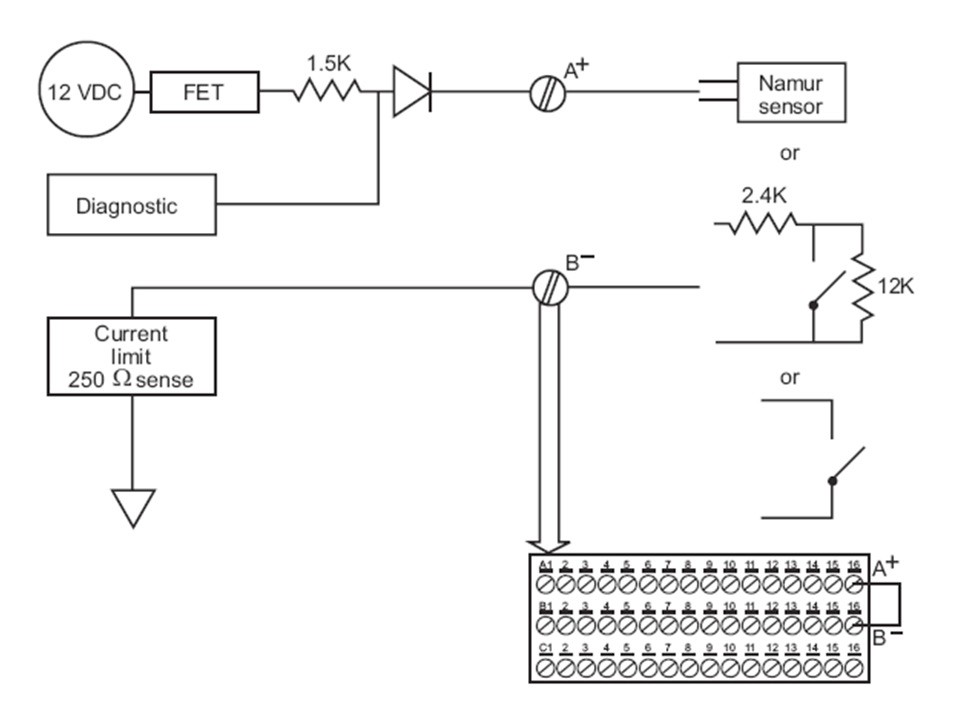
Wiring diagram and terminations for discrete input channels.
Pulse testing is recommended; however, it can be disabled for field devices such as solid state relays that cannot support it.
|
Discrete Output Channel Specifications |
|
|
Item |
Specifications |
|
Number of Channels |
16 |
|
Isolation |
Each channel is optically isolated from the system and factory-tested to 1500 V DC. No channel-to-channel isolation. |
|
Output Voltage |
Field power minus 2 V |
|
Field Power |
0.5 A continuous per channel; 4.0 A max. per card |
|
Output Loading |
56 to 3500 Ω |
|
Off-State Leakage |
Open loop test on: 7.8 mA Open loop test off: 4.5 μA typical; 10 μA max. Note: Optional pulse test will apply 24 V DC pulse on line for 1.0 mS every 50 mS. Refer to the Installation Notes for more information on pulse testing. |
|
Short Circuit Protection |
Outputs current limited to 2.0 A typical |
|
Line Fault Detection – Short Circuit |
<5 Ω for >1 second with +24 V DC field power. Refer to the Installation Notes for information on pulse testing. |
|
Line Fault Detection – Open Circuit (With +24 V Dc Field Power) |
>25 kΩ for open loop detection <3.5 kΩ for no open loop detection Refer to the Installation Notes for information on pulse testing. |
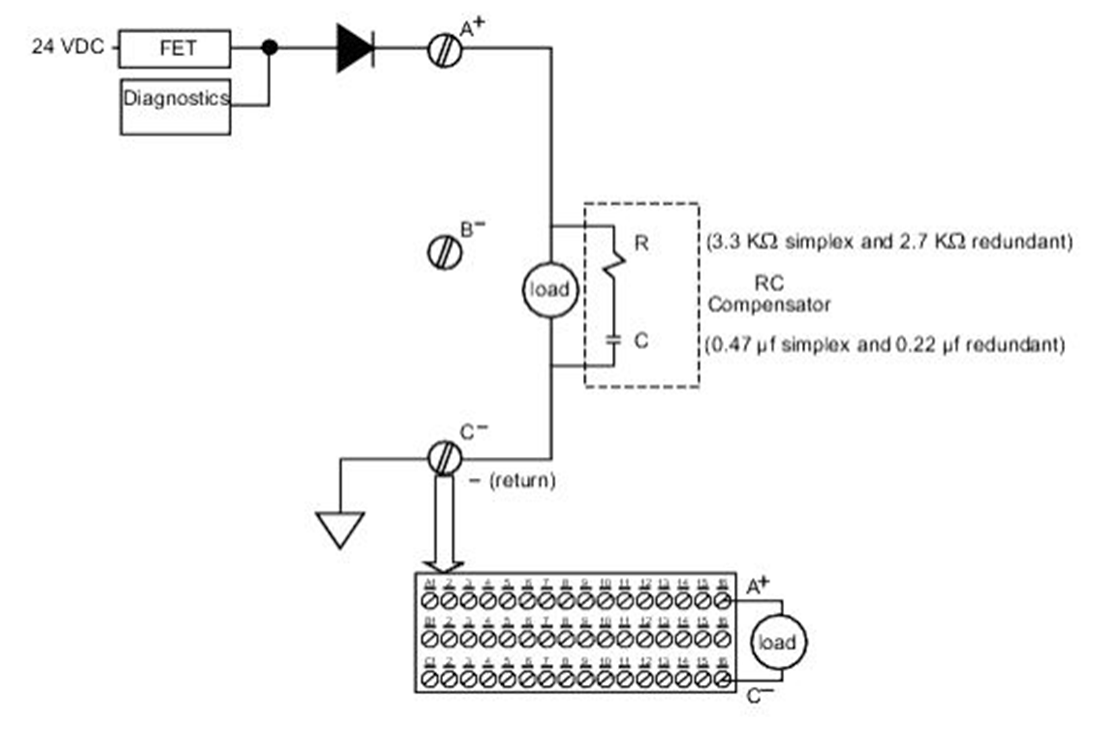
Wiring diagram and terminations for discrete output channels.
产品留言






